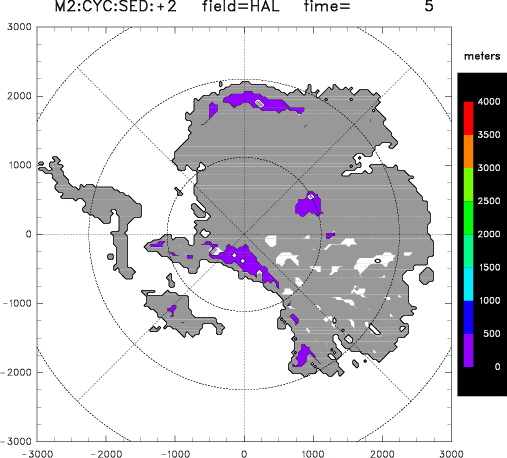
Rob DeConto has been working with Dr. Dave Pollard (Penn State), coupling dynamical ice-sheet models to GCMs, to examine the sensitivity of the coupled atmosphere-cryosphere system to changing external boundary conditions. They are currently applying their new modeling scheme to a study of Antarctic glaciation. The rapid shift to cold conditions over high southern latitudes and the sudden accumulation of East Antarctic ice near the Eocene/Oligocene boundary (~35 Ma) represents the most fundamental reorganization of the global climate-ocean system in the Cenozoic. Forcing factors generally believed to have most strongly influenced the Paleogene cooling trend include the opening of oceanic gateways separating Antarctica from South America and Antarctica from Australia, and a reduction in greenhouse gas concentrations. However, the relative importance of these forcing factors is not well understood. Nor is it clear what actually triggered the relatively rapid and extreme climate transition at the Eocene-Oligocene boundary. Additional forcings and internal feedbacks, not before considered, may have played important roles. The movie below shows a numerical model prediction of Early Oligocene ice sheets, responding to changing orbital parameters (DeConto and Pollard, in prep).
